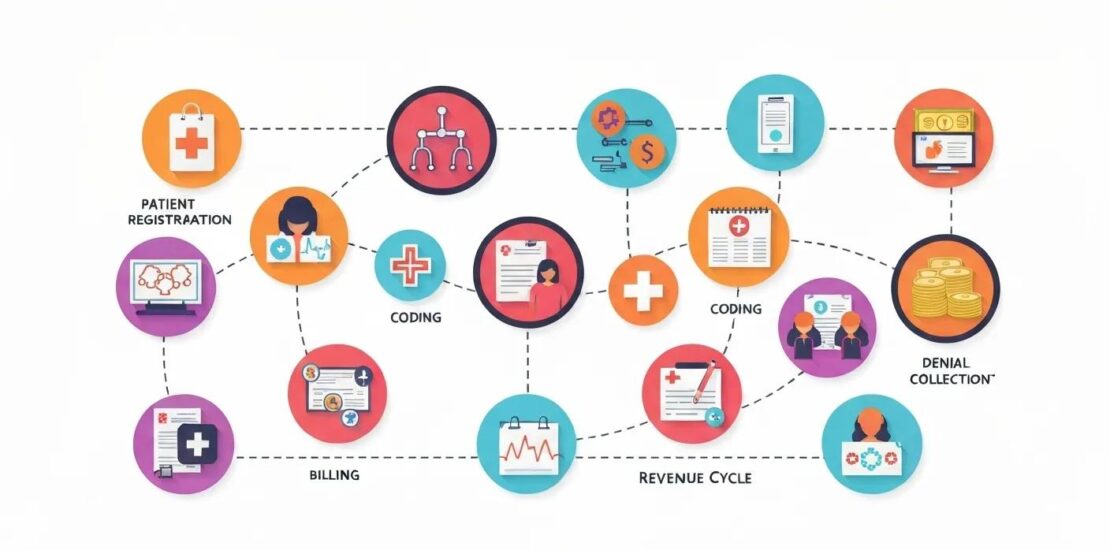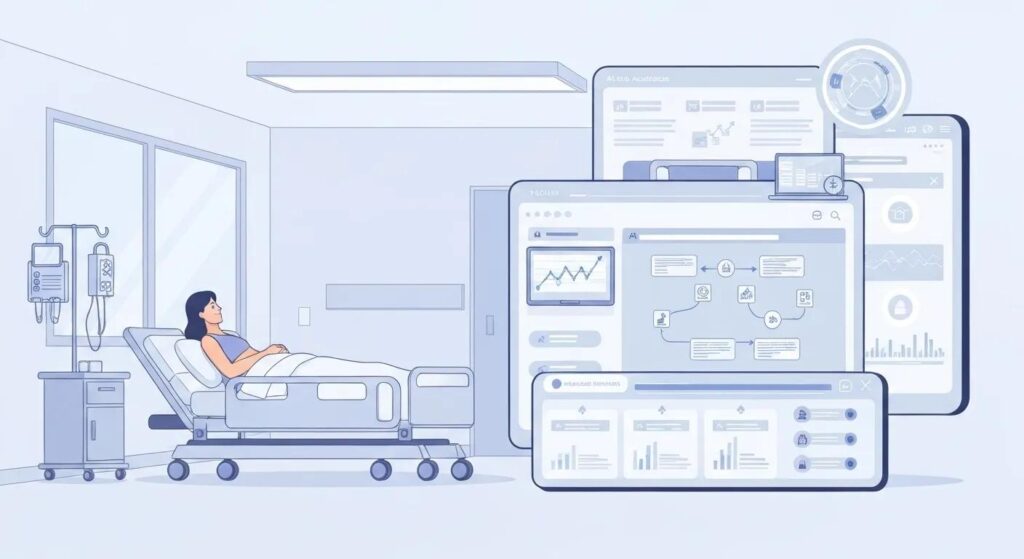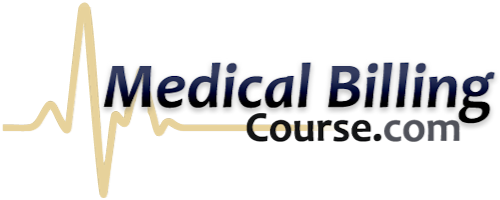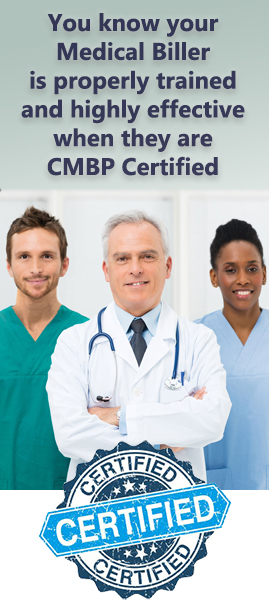- 10/06/2025
- Posted by: Medical Billing Course
- Categories: Medical Billing Certification, Medical Billing Procedures

Best Practices for Effective Revenue Cycle Management in Healthcare
Revenue Cycle Management (RCM) is the backbone of healthcare finance. For medical billing students, understanding RCM is the foundation of your future career. RCM includes all administrative and clinical steps involved in capturing, managing, and collecting payment for patient services.
Learning RCM best practices prepares you to contribute directly to the financial health of a medical practice or hospital and helps you stand out to employers.
“Mastering revenue cycle management is crucial for aspiring medical billers. It’s not just about submitting claims; it’s about understanding the entire financial flow of a healthcare practice. My goal as an instructor is to equip students with the practical knowledge and confidence to excel in this vital field.” — Tri Smith, Instructor, MedicalBillingCourse.com
With over 5 years of experience as an instructor, Tri Smith has guided thousands of students through comprehensive medical billing courses, empowering them to achieve certification and launch successful careers.
Market Data & Trends: Why Students Should Care About Revenue Cycle Management Best Practices
The global RCM industry is expanding rapidly, presenting significant opportunities for skilled professionals. Understanding these market dynamics is crucial for medical billing students to grasp the importance and future potential of their chosen field.
Global RCM Market Growth Projections
Why this matters for you: The substantial growth projected for the RCM industry directly translates into increased demand for well-trained medical billing and coding professionals. As healthcare organizations adopt advanced technologies and grapple with evolving payer regulations, the need for individuals who can navigate these complexities with precision and efficiency becomes paramount.
This expanding market signifies more job openings, greater career advancement potential, and a secure future for those who master RCM best practices.
Core Best Practices Every Medical Billing Student Must Master
Patient Access Optimization: A Key Revenue Cycle Management Best Practice
Definition: Patient Access Optimization refers to processes at the beginning of the patient encounter to ensure accurate information, verify insurance, and communicate financial responsibilities.
The first step of the revenue cycle begins before a patient even sees a doctor. Incorrect information at registration leads to claim denials and delayed payments.
What You Need to Know:
- Automated Insurance Eligibility Checks – Verify coverage and pre-authorization requirements in real-time.
- Accurate Demographic Collection – Ensure patient information matches insurance provider records.
- Financial Counseling and Clear Communication – Discuss estimated patient responsibility upfront.
- Pre-authorization and Referrals – Obtain necessary pre-authorizations or referrals to avoid claim denials.
Step-by-Step Process: Verifying Insurance Eligibility
- Obtain patient demographic and insurance information.
- Access eligibility verification tools.
- Enter patient and insurance details accurately.
- Submit the verification request.
- Review results (coverage, patient responsibility, authorization needs).
- Document findings in the patient’s record.
Practical Errors to Avoid:
- Incorrect insurance ID number → Claim denied.
- Failing to obtain authorization → Claim denied.
- Transposed patient name or DOB → Mismatched data leading to denial.
- Not verifying coverage for specific services → Services deemed not covered.
Practice Scenario:
A patient presents for an MRI. The front desk failed to verify insurance eligibility and confirm if a referral was needed. The claim is denied for a “missing referral.”
Career Insight:
Employers value candidates who understand patient access optimization. Your ability to reduce claim denials directly impacts financial performance. Highlighting these skills makes you a more attractive candidate.
What Is a Clean Claim and Why Does It Matter for Revenue Cycle Management Best Practices?
Definition: A “clean claim” is submitted to an insurance payer with all necessary information and no errors, allowing for prompt payment on the first submission.
Steps to Remember for Clean Claims:
- Accurate Coding from Complete Documentation – Code diagnoses (ICD-10-CM) and procedures (CPT/HCPCS) accurately based on clinical documentation.
- Proper Charge Capture – All billable services must be identified and captured correctly.
- Use Claim Scrubbing Software – Analyze claims for potential errors before submission.
- Stay Updated on Payer-Specific Rules – Each payer has unique requirements.
- Accurate Modifiers – Use modifiers to provide additional information about the service.
Step-by-Step Process: Submitting a Clean Claim
- Verify patient registration and insurance eligibility.
- Review clinical documentation to support billed services.
- Assign correct ICD-10-CM and CPT/HCPCS codes, with modifiers.
- Enter charges accurately into the Practice Management System (PMS).
- Run the claim through claim scrubbing software.
- Review and correct any flagged errors.
- Submit the corrected claim electronically.
- Confirm payer receipt.
Errors to Avoid:
- Outdated diagnosis code → Claim denied.
- Missing required modifier → Reduced payment or denial.
- Mismatch between diagnosis and procedure codes → Claim denied for “lack of medical necessity.”
- Billing for undocumented services → Potential denial or audit.
- Incorrect patient account number or insurance ID → Claim rejected.
Case Study:
A cardiology practice improved its clean claim rate for EKGs by 15% by standardizing coding, providing coder training, and implementing pre-submission reviews.
Career Insight:
A high clean claim rate demonstrates accuracy and efficiency, directly contributing to reduced costs and faster revenue collection. This skill sets you apart.
How Do You Handle Claim Denials Effectively?

A Core Revenue Cycle Management Best Practice
Definition: Denial management is the process of identifying, analyzing, appealing, and preventing claim denials. It aims to recover lost revenue and improve future claim submissions.
Key Points for Students:
- Learn to Read EOBs and Remittance Advices (RAs) – Understand denial codes, reasons, and payer instructions.
- Study Common Denial Reasons – Familiarize yourself with frequent causes like eligibility issues, incorrect coding, missing authorizations, and timely filing limits.
- Practice Appeal Letter Writing – Develop skills in writing clear, persuasive appeal letters with supporting documentation.
- Understand Payer Policies – Research specific policies of major insurance payers.
- Root Cause Analysis – Identify underlying reasons for denials to implement preventative measures.
Step-by-Step Process: Handling a Claim Denial
- Log the Denial: Record the denied claim with relevant details.
- Analyze the Reason: Review the EOB/RA for the specific denial reason.
- Categorize the Denial: Classify the denial type (e.g., eligibility, coding error).
- Investigate Documentation: Review medical records and billing documentation.
- Determine Action: Decide whether to correct, appeal, or write off the claim.
- Execute and Follow Up: Make adjustments, submit, and follow up until resolution.
- Track Trends: Analyze denial data to identify recurring issues and implement improvements.
Errors to Avoid:
- Missing timely filing deadline → Claim uncollectible.
- Submitting appeal without documentation → Appeal denied.
- Failing to correct the root cause of recurring denial → Continued revenue loss.
- Not following up on submitted appeals → Lost payment opportunities.
Case Study:
A hospital’s physical therapy department reduced therapy claim denials by 40% by implementing targeted staff training on modifier application and pre-submission reviews.
Career Connection:
Proficiency in denial management demonstrates analytical and problem-solving skills. Healthcare organizations seek professionals who can recover revenue and improve processes.
Which KPIs Should Medical Billing Students Track for Revenue Cycle Management Best Practices?
Definition: KPIs are quantifiable measures used to evaluate RCM effectiveness and efficiency, providing insights into financial health and areas for improvement.
Key KPIs to Understand:
- Days in Accounts Receivable (A/R) – Average days to collect payments. Lower is more efficient.
- Clean Claim Rate – Percentage of claims accepted on first submission. A primary goal.
- Denial Rate – Percentage of submitted claims denied. Critical for identifying systemic issues.
- Net Collection Rate (NCR) – Percentage of allowed charges actually collected. Higher signifies better revenue capture.
- Patient Collections Rate – Percentage of patient responsibility collected. Reflects billing and payment process effectiveness.
- A/R Aging Analysis – Breakdown of outstanding A/R by age. Identifies accounts needing attention.
- First Pass Resolution (FPR) Rate – Percentage of claims paid correctly on first submission.
How KPIs Relate to Your Role:
Your daily tasks directly influence these KPIs. Accurate registration improves the Clean Claim Rate and reduces Days in A/R. Precise coding contributes to a higher NCR and lower Denial Rate. Effective denial management impacts the Denial Rate and A/R aging.
Career Insight:
Professionals who understand how their work impacts KPIs are more valuable. Discussing these metrics and suggesting improvements can lead to leadership opportunities.
EHR/EMR Integration and Workflow: Essential for Revenue Cycle Management Best Practices
Definition: EHR/EMR integration refers to the seamless flow of data between clinical and billing systems, ensuring clinical information accurately translates into billing data.
Focus Areas for Students:
- Clinical Documentation to Coding: Ensure EHR/EMR documentation is complete and accessible for accurate code assignment.
- Integrated Charge Capture: Utilize built-in charge capture functionalities to automatically generate charges.
- Data Flow for Reduced Errors: Automatic data flow minimizes manual entry errors.
- Patient Portal Integration: Streamline patient access and data collection via patient portals.
Practical Errors to Avoid:
- Unlinked Services: Revenue lost if services are documented but not linked to charges.
- Demographic Mismatches: Inconsistent data between EHR/EMR and billing systems leads to denials.
- Incomplete Documentation: Vague documentation can lead to denials for lack of medical necessity.
Example:
A physician documents a flu shot in the EHR. An integrated system should automatically trigger a charge. If not, revenue is lost.
Career Insight:
Proficiency with EHR/EMR systems is expected. Understanding data flow and troubleshooting fundamental issues enhances employability.
HIPAA Compliance & Data Security: A Cornerstone of Revenue Cycle Management Best Practices
Definition: HIPAA establishes national standards for protecting sensitive patient health information (PHI) from disclosure or misuse.
Essentials for RCM Professionals:
- Role-Based Access Controls: Limit access to PHI to only what’s necessary for job duties.
- Encryption: Encrypt PHI at rest and in transit.
- Staff Training: Provide regular training on HIPAA regulations and security procedures.
- Business Associate Agreements (BAAs): Ensure BAAs are in place with third-party vendors handling PHI.
- Physical Safeguards: Implement measures to protect physical access to PHI.
Common Breaches and How to Avoid Them:
- Leaving Workstations Unlocked: Always lock your computer screen.
- Sending PHI via Unencrypted Email: Use secure messaging or encrypted email.
- Improper Disposal of PHI: Shred paper documents and properly wipe electronic media.
- Discussing PHI in Public Areas: Avoid discussing patient information in public spaces.
- Sharing Passwords: Never share login credentials.
Scenario:
Sending patient balance statements to a collections agency without encryption is a HIPAA violation. Secure, encrypted methods or a BAA are required.
Career Insight:
A strong understanding of HIPAA compliance makes you a trusted employee. Healthcare organizations prioritize individuals knowledgeable about privacy and security regulations.
Value-Based Care Adaptations: Evolving Revenue Cycle Management Best Practices
Definition: Value-Based Care (VBC) reimburses providers based on the quality of care, not just the quantity of services.
Student Takeaways for VBC:
- Documentation Must Prove Quality: Documentation must demonstrate care quality and patient outcomes.
- Understand New Payment Models: Familiarize yourself with bundled payments, shared savings, and ACOs.
- Focus on Patient Engagement: VBC emphasizes patient engagement, preventative services, and chronic disease management.
- Data Analytics and Reporting: Professionals who can contribute to reporting quality metrics will be in demand.
Examples:
- Hip Replacement Bundle: A single payment for all services related to a hip replacement.
- Diabetes Management Program: A program incentivizing controlled A1c levels and reduced hospital readmissions.
Career Insight:
Understanding VBC principles provides a competitive advantage as the industry shifts towards these models. This knowledge equips you for new payment structures and reporting demands.
Workforce Training, Certification, and Continuous Learning for Revenue Cycle Management Best Practices
The RCM field requires ongoing education. Formal training, certifications, and continuous learning are essential for career advancement.
Certification Paths:
- Certified Professional Coder (CPC) – AAPC, medical coding for physician services.
- Certified Professional Biller (CPB) – AAPC, billing process and A/R management.
- Certified Revenue Cycle Executive (CRCE) – NAHRI, for leadership roles.
- Certified Coding Associate (CCA) / Certified Coding Specialist (CCS) – AHIMA, medical coding in hospital settings.
- Certified Billing and Coding Specialist (CBCS) – NHA, foundational certification.
Why Certification Matters:
- Improves Employability: Preferred by employers, with wider job opportunities.
- Increases Salary Potential: Higher earning potential.
- Supports Career Advancement: Demonstrates commitment to development.
- Validates Expertise: Objective proof of knowledge.
Continuous Learning Strategies:
- Join Professional Associations: AAPC and AHIMA offer resources and updates.
- Attend Seminars and Webinars: Learn about new trends and regulations.
- Stay Current with CEUs: Maintain certifications through continuing education.
- Read Industry Publications: Follow reputable healthcare finance and RCM journals.
- Network with Peers: Share knowledge and learn from others.
The Evolving Landscape: AI, Automation, and Analytics in Revenue Cycle Management

Technology is transforming RCM, moving towards sophisticated automated solutions. AI, Robotic Process Automation (RPA), and advanced analytics are integral to efficient RCM operations.
Comparison of Traditional vs. AI/Automated RCM Processes
Career Impact: Students trained in modern technological tools will have a distinct advantage. Understanding how AI and automation enhance RCM efficiency is crucial.
A Graduate’s Perspective on RCM Mastery
“Before taking the course, I felt overwhelmed by the complexity of medical billing. The RCM modules were a game-changer. Understanding the entire revenue cycle, from patient registration to claim denial management, gave me the confidence to tackle real-world scenarios. I landed my dream job within weeks of graduating, and my employer specifically mentioned my strong grasp of RCM best practices as a key factor.” — Jessica M., Certified Professional Biller
Challenges and Opportunities for Students in Revenue Cycle Management
Navigating the RCM field presents challenges and opportunities. Understanding these dynamics helps chart a successful career path.
Challenges:
- Complex Payer Rules: Overwhelming volume and complexity of payer rules.
- Frequent Regulatory Updates: Constant adaptation to changes in regulations and policies.
- Balancing Speed and Accuracy: The pressure for quick processing versus the need for accuracy.
- Adapting to Technology: Continuous learning is required for new tools and platforms.
- Data Integrity: Ensuring data accuracy across multiple systems is challenging.
- Interdepartmental Communication: Poor communication leads to errors and delays.
Opportunities:
- Specialize in High-Demand Areas: Focus on expertise in denial management, prior authorizations, or specific coding specialties.
- Leverage Automation and AI: Embrace these technologies, as professionals skilled in AI tools will be in high demand.
- Master Both Traditional and Modern RCM: Combine foundational principles with technological proficiency.
- Explore Diverse Career Paths: RCM skills are transferable across various healthcare settings.
- Contribute to Process Improvement: Propose solutions to inefficiencies for career growth.
- Focus on Compliance and Data Security: Expertise in HIPAA and data security is valuable.
Take Action: Building Your Career in RCM with Best Practices in Revenue Cycle Management
Your journey in RCM is about developing practical, in-demand skills. The RCM field offers a stable and rewarding career for detail-oriented, analytical individuals committed to learning.
Next Steps to Success:
- Master Core Competencies: Build a strong foundation in coding, billing principles, and the claims lifecycle.
- Build Comfort with EHR/EMR Systems: Gain familiarity with standard systems and understand data flow.
- Pursue Relevant Certifications: Obtain industry-recognized certifications to enhance credibility.
- Hone Soft Skills: Develop communication, problem-solving, critical thinking, and attention to detail.
- Prioritize Compliance and Ethics: Understand and adhere to HIPAA and ethical billing practices.
- Network with Professionals: Attend events, join organizations, and connect with experienced professionals.
- Stay Informed: Continuously educate yourself on industry trends, regulations, and technologies.
Key Takeaway: Understanding the entire revenue cycle—from registration to payment and analytics—prepares you to contribute meaningfully to healthcare organizations and build a successful career.
Conclusion
Mastering revenue cycle management is more than just learning billing steps—it’s about connecting accuracy, compliance, and technology to real-world healthcare outcomes. For medical billing students, understanding these best practices in revenue cycle management will not only prepare you for certification exams but also position you as a valuable contributor in a growing, technology-driven industry.

